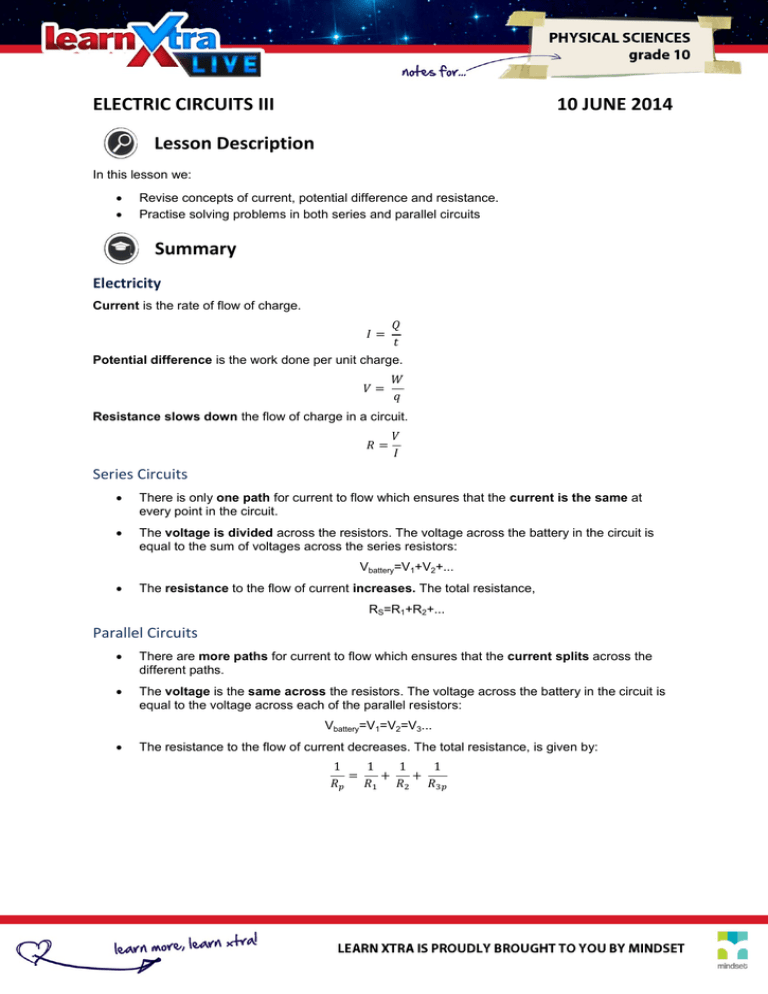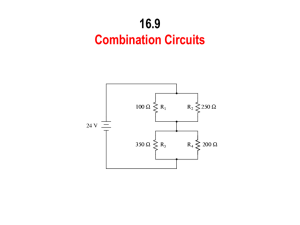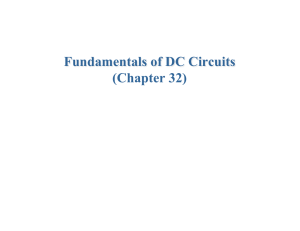ELECTRIC CIRCUITS III 10 JUNE 2014 Lesson Description Summary
advertisement

ELECTRIC CIRCUITS III 10 JUNE 2014 Lesson Description In this lesson we: Revise concepts of current, potential difference and resistance. Practise solving problems in both series and parallel circuits Summary Electricity Current is the rate of flow of charge. Potential difference is the work done per unit charge. Resistance slows down the flow of charge in a circuit. Series Circuits There is only one path for current to flow which ensures that the current is the same at every point in the circuit. The voltage is divided across the resistors. The voltage across the battery in the circuit is equal to the sum of voltages across the series resistors: Vbattery=V1+V2+... The resistance to the flow of current increases. The total resistance, RS=R1+R2+... Parallel Circuits There are more paths for current to flow which ensures that the current splits across the different paths. The voltage is the same across the resistors. The voltage across the battery in the circuit is equal to the voltage across each of the parallel resistors: Vbattery=V1=V2=V3... The resistance to the flow of current decreases. The total resistance, is given by: Test Yourself Question 1 (Shutter’s Physical Science, Grade 10, 2005) Consider the following two circuits: a. What is the potential difference across resistor R2? b. What is the potential difference across cell 2? c. Which resistor has the higher resistance R1 or R3? Question 2 (Study and Master, Physical Science Grade 10, 2003) Two identical light bulbs L1 and L2 are connected in parallel with one another, along with a resistor connected in series to a 1.5 V cell. Redraw the diagram and include: a. 5 additional cells (total of 6 cells) providing a total emf of 6 V. b. An ammeter which reads the total current. c. A voltmeter which reads the potential difference over both light bulbs. d. A switch which will increase the current when it is closed. Question 3 A kettle, connected to a 200 V source and boils water for 1 minute 30 seconds. The current through the kettle is 5 A. a. The resistance of the kettle. b. The energy transferred to heating the water. Improve your Skills Question 1 (Study and Master, Physical Science Grade 10, 2003) A current of 1.5 A flows through the accompanying circuit when a battery with emf 3 V is connected in series. Calculate: a. b. c. d. e. The amount of charge flowing through the ammeter in 10 seconds. The resistance of R1. The resistance of R2. The total resistance of the circuit. The amount of energy transferred to resistor R2 in 5 minutes. Question 2 Study the accompanying circuit diagram. Calculate: a. b. c. d. e. f. The effective resistance of the parallel connection. The total resistance of the circuit. The current passing through the 2Ω resistor. The current in the 12 Ω resistor The current in the 24 Ω resistor. Which of the voltmeters will have the same reading? Links www.everythingscience.co.za









